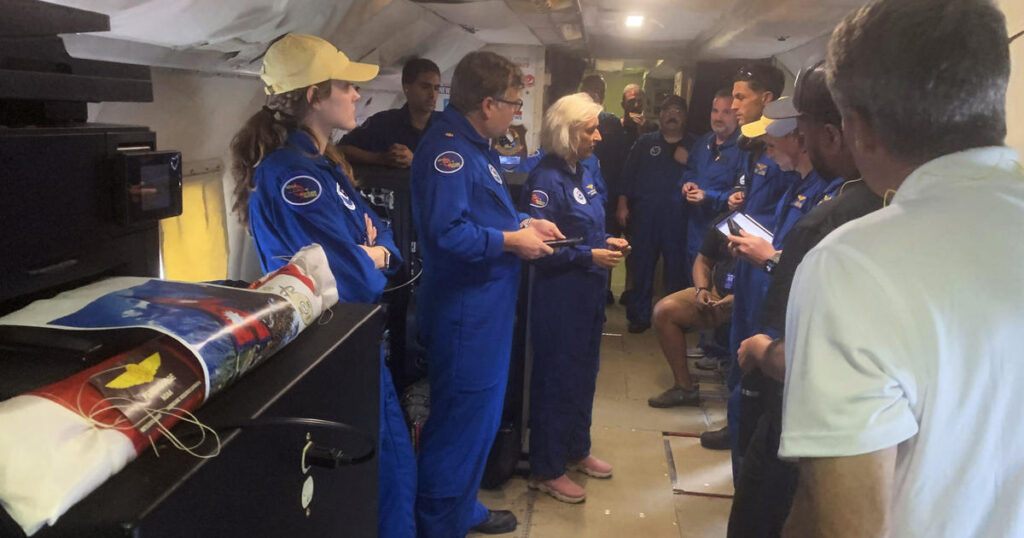
Peter Dodge, a renowned scientist celebrated for his extensive work in meteorology, had a remarkable career marked by nearly 400 flights into the hearts of hurricanes. His journey took a poignant turn recently when, during a reconnaissance mission for Hurricane Milton, NOAA (National Oceanic and Atmospheric Administration) officials honored him by scattering his ashes into the storm. This tribute came just a day before Hurricane Milton made landfall in Siesta Key, Florida, highlighting Dodge’s lifelong dedication to hurricane research and his significant contributions to the field.
Shelley Dodge, Peter’s sister, expressed deep emotional resonance with the act. “It’s very touching,” she remarked, reflecting on how the tribute aligned with NOAA’s goal to honor her brother. Indeed, the ashes were released into the eye of the storm just hours before it approached the Florida coast. An official log of the flight documented this final tribute as part of Dodge’s 387th and last mission. While the event carried bittersweet undertones—balancing concern for those affected by the hurricane with the fulfillment of honoring her brother—it underscored both his passion for meteorology and the impact he left on the field.
Peter Dodge passed away in March 2023 at the age of 72 due to complications following a fall and a stroke. He had devoted 44 years to federal service, earning multiple accolades, including recognition for technology developed during Hurricane Katrina in 2005. His dramatic experiences also included surviving severe turbulence during a 1989 flight into Hurricane Hugo, where one of the aircraft’s engines caught fire. His sister remembered the harrowing event, recounting how the crew narrowly escaped disaster after shedding excess fuel and some heavy equipment to regain altitude.
Though a degenerative eye condition ultimately curtailed his reconnaissance flying, Dodge remained a significant figure in the field of tropical cyclone research. His expertise in radar technology and his in-depth understanding of storm behavior were instrumental to NOAA’s missions. Following his passing, his colleagues noted their profound sorrow in a newsletter, acknowledging him as a longstanding meteorologist whose contributions shaped their understanding of hurricanes.
The logistics surrounding the release of Dodge’s ashes involved meticulous planning. Family members were kept informed about the timing of the mission as NOAA sought the optimal conditions for this solemn act. “It finally did on the 8th,” Shelley said, describing the special moment when they confirmed the exact coordinates of the ash dispersal. The package containing his ashes was adorned with meaningful symbols, including the flag of Nepal, a nod to his past service as a Peace Corps volunteer where he taught math and science.
Michael Lowry, a hurricane specialist, shared news of the tribute on social media, calling it a “beautiful tribute.” The official flight log noted with poignancy the moment of honoring Peter Dodge, encapsulating a significant chapter in meteorological history.
Outside of his professional life, Peter Dodge was an avid gardener with a passion for bamboo and had practiced Aikido, reflecting his diverse interests and personal pursuits. His sister fondly remarked on his intellectual curiosity, which remained intact even after he lost his sight. This relentless pursuit of knowledge and dedication to his field not only defined his career but also left an enduring legacy.
In essence, the touching tribute during Hurricane Milton represents both a farewell to a beloved scientist and a recognition of his exceptional contributions to understanding nature’s most formidable phenomena. Peter Dodge’s journey into and beyond the storms he revered showcases a life dedicated to science, service, and an indomitable spirit.
